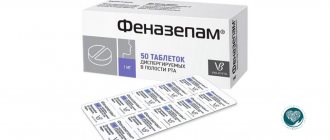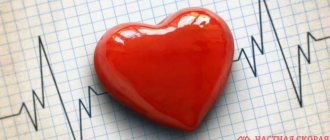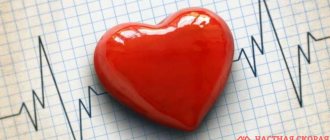How many poisons do you think poison us every day? Car exhaust fumes, nicotine, alcohol, nitrates in food... You can’t even list everything. They accumulate primarily in the blood, which carries harmful substances to all organs and systems, creating favorable conditions for impaired immunity and the development of all kinds of diseases.
Therefore, blood cleansing for a modern person is about to become as necessary a procedure as brushing your teeth.
How to cleanse your blood? And is this even possible? Yes. There is an effective method: plasmapheresis.
What is it used for?
The purpose of plasmapheresis is to remove existing toxic and metabolic wastes in plasma that cause various diseases and detoxify the body. During the procedure, harmful substances such as:
- Toxins;
- Harmful proteins;
- Hormones;
- Antigens;
- Antibodies;
- “Bad” lipoproteins;
- Infectious agents;
- Dead cells of the immune system;
- Mediators of inflammation;
- Excess fibrinogen;
- Products of tissue and cellular decay.
If I become a donor, let them teach me!
Plasmapheresis is not only a therapeutic procedure, but also a donor procedure. Perhaps what I say will be a discovery for the reader, but the main consumable material of the blood service is not red blood cells, but fresh frozen plasma. In general, the ratio of erythromass and plasma consumption in any clinic ranges from 1/10 to 1/50. And primarily because for a seriously ill patient, blood cells - oxygen transport - are not as important as coagulation factors and proteins. Therefore, plasma procurement is the most important task of blood transfusion stations and departments. However, compared to plasma, which can be stored in a frozen state for a year without harm, blood cells can withstand a maximum of a month. And even then, by the end of the term, they are of little use; it is a stretch to call them cells. Rather, these are already corpses of red blood cells. Sometimes you hear the question: Isn’t this harmful? - What? - Well, donate blood, do plasmapheresis? Everything is harmful if you don’t have a sense of proportion, and when you pick your nose, you’re bound to someday bury your finger in the vault of your skull. There are rules for donation: blood is donated no more than once every 2 months, plasma no more than once every 2 weeks, and platelets no more than once a week. All these components are very necessary. And, considering that red blood cells are stored for up to 35 days, and platelets for 3-5 days in a special shaker, you can imagine how important donation is.
For what diseases is it performed?
Plasmapheresis is performed for the following diseases:
- Cardiovascular diseases (arterial hypertension, coronary heart disease, atherosclerosis, viral myocarditis);
- Skin diseases (psoriasis, eczema, atopic dermatitis, Lyell's syndrome);
- Allergic diseases (bronchial asthma, urticaria);
- Autoimmune diseases (HIV, vasculitis, myasthenia gravis);
- Endocrine diseases (diabetes mellitus and thyroid diseases);
- Diseases of the gastrointestinal tract (hepatitis, cholecystitis, pancreatitis, ulcerative colitis, Crohn's disease);
- Obstetric and gynecological diseases (premenstrual syndrome, chronic inflammatory diseases, infertility, prevention of Rh conflict, menopause, preparation for in vitro fertilization, toxicosis of pregnant women);
- Toxicological diseases (alcoholism, drug addiction, substance abuse);
- Rheumatological diseases (rheumatoid arthritis, systemic lupus erythematosus);
- Urological diseases (chronic urethritis and prostatitis);
- Chronic fatigue syndrome.
Diseases that require plasmapheresis:
- Paraproteinemic hemoblastoses;
- Thrombocytopenic purpura;
- Septic conditions;
- Systemic capillaritis;
- Multiple sclerosis (if treatment with glucocorticoids is ineffective);
- Polyradiculoneuritis;
- Collagenoses.
Four misconceptions about plasmapheresis
Ten years ago, plasmapheresis was considered an exclusively medical procedure and was prescribed only for certain diseases. Today it is offered on every corner and is called “blood cleansing.” With the help of plasmapheresis, they promise to rejuvenate us, rid us of “toxins” and, in general, “cleanse us at a deep cellular level.”
What is plasmapheresis actually needed for? How universal is this procedure? How safe is it? These other questions are answered by Yuri Aleksandrovich Kuzmin, an anesthesiologist of the highest qualification category, a specialist in plasmapheresis.
Misconception 1. Plasmapheresis is the purification of blood from toxins
People often call us with the question: “Do you clean blood?” In such cases, I answer: “I don’t do blood purification, I do a medical procedure - plasmapheresis.” This is, firstly. Secondly, the concept of “slags” does not exist in medicine. And cleaning blood from them is strange, to say the least.
What is plasmapheresis?
This technique is based on filtering plasma (the liquid part of the patient's blood) through a special membrane. The membrane has a certain caliber of holes, and too large protein molecules that contain toxic substances or inflammatory elements remain in the filter.
Can they be seen?
Yes. With each procedure, I show the patient a “before” (pristine white) and “after” filter to really see what has settled on them.
Misconception 2. Plasmapheresis is the simplest procedure that can be done even during your lunch break
Yuri Alexandrovich, please tell us how plasmapheresis is performed.
To carry out plasmapheresis, a special device is used - I work at Hemos-PF. It is the basic apparatus of the Ministry of Emergency Situations for providing assistance in emergency situations.
The patient lies down on the couch, and the doctor inserts a plastic catheter into a vein in his arm through which blood will be drawn.
Is only one vein involved?
There are different methods: some involve one vein, some use two, for example, peripheral and central. The method of membrane plasmapheresis that I perform involves only one vein. As doctors say, this is minimally invasive.
The catheter has been placed - what next?
Next, the patient’s blood is “driven” through the machine.
All?
The amount of blood that is taken is returned. Each person has a different blood volume. Therefore, the doctor calculates the amount of blood that is “driven through” in one session individually for each patient, taking into account a clinical blood test, body weight and height. There is a computer program for this calculation.
How long does the procedure take?
About an hour. During this time, the patient's condition is monitored: blood pressure, respiratory rate, pulse and blood oxygen saturation are measured. That is, the patient is not only under the control of a doctor, but also under the control of equipment.
Can plasmapheresis be done on an outpatient basis?
Yes.
Right on your lunch break?
Plasmapheresis is not such a simple procedure that it can be performed during a lunch break. This is not an injection: they injected him and he went. People tolerate plasmapheresis differently, so there is a certain period of time after the procedure (from half an hour to an hour) during which I monitor the patient's condition. If all indicators are stable, the person can go home.
Misconception 3: Plasmapheresis is dangerous
Let's talk about the safety of plasmapheresis, otherwise now there are horror stories that people are dying from this...
Turchinsky syndrome, as journalists called it.
Yes!
I'll probably disappoint you - plasmapheresis has nothing to do with it. Vladimir Turchinsky died from something completely different. He had hormonal problems that led to thrombosis and heart attack. I will say more, plasmapheresis is a prevention of thrombosis and heart attack, since during the procedure the “thick” part of the plasma is removed, as a result the blood is thinned and blood circulation becomes much better.
That is, Turchinsky syndrome...
- it is a myth.
Still, let's dwell on the safety of plasmapheresis.
- Firstly, this procedure uses disposable medical instruments. With each patient, I open the disposable kit and show that this is all specifically for him.
- Secondly, I will once again draw your attention to the fact that plasmapheresis is not a conveyor belt, when the doctor connected the device and left. I constantly communicate with the patient during the procedure and after, monitoring his well-being. Since I have more than thirty years of experience in intensive care, I take such things seriously.
- Thirdly, plasmapheresis does not cause any unpleasant sensations, because the entire process takes place in the physiological mode of the heart. During systole, a certain volume of blood is expelled from the heart; during diastole, relaxation occurs - blood returns. With plasmapheresis, all the characteristics of normal blood flow are preserved.
- Fourthly, during the procedure no medications are used, only saline solution to wash the lines through which the blood flows so that it does not clot. Moreover, if the patient is “overfed” with hormonal drugs, then they are included in the protein complexes of the plasma and also settle on the filter. That is, we remove excess hormones that the patient used during treatment.
Does plasmapheresis use donor plasma? Many people are afraid of this.
No. Membrane plasmapheresis, which we do at the Scandinavian Health Center, does not involve the use of donor plasma. Apparently, you mean cascade plasmapheresis, in which 400 to 800 ml of plasma is taken and replaced with blood substitutes. I don't use this technique.
Are there any contraindications for membrane plasmapheresis?
An absolute contraindication is gastric ulcer with bleeding. Instability of the blood coagulation system is a relative contraindication. In addition, I will not insist on performing plasmapheresis on a patient whose peripheral venous network is poorly developed.
Is Vienna difficult to find?
Yes, for this reason.
Misconception 4. Plasmapheresis is universal, it helps against all diseases
Now there are many advertisements on the Internet that say that plasmapheresis is necessary for all residents of the metropolis, that it helps fight the negative effects of stress and poor ecology on the body. And with its help you can rejuvenate. This is true?
Are you joking? Plasmapheresis is a medical procedure
, which complements the main treatment of the disease. Only a doctor can prescribe it if there are indications for it. It makes no sense to do plasmapheresis for everyone.
In what cases can a doctor prescribe plasmapheresis?
It is prescribed as an additional method for certain diseases in cases where the main treatment was ineffective.
Yuri Alexandrovich, can you be more specific? For what skin diseases, for example, is plasmapheresis recommended?
If drug therapy is ineffective, plasmapheresis is used for allergic dermatitis, furunculosis, psoriasis, etc.
Any skin disease is not a one-day problem. The effect of treatment does not occur immediately. Most often, in the treatment of skin diseases, they move from simple methods - meaning ointments, drugs - to more complex ones. One of the next steps when “pill” therapy is ineffective is plasmapheresis - a method when factors that cause manifestations of the disease are removed directly from the blood.
How many sessions are needed for the skin condition to improve? Is one enough?
The number of procedures that the patient will need is calculated individually by the doctor depending on the disease, its duration, and general well-being. According to the statistics that I have, for skin diseases, on average, 5 to 7 procedures are needed. Although with allergic dermatitis the effect is noticeable after 1-2 sessions.
Let's imagine this situation: a person read an article about plasmapheresis, decided that he needed it, and came to you.
First, I will talk with the patient - this is what the initial consultation with the doctor performing plasmapheresis
, I find out what kind of disease he has, how he was treated, why there was no positive effect. Then we will together plan the tactics for further action: either you should start with conventional treatment from a dermatologist, or, if the possibilities of drug treatment have been exhausted and the dermatologist recommends, do plasmapheresis.
What if a person came to you not for treatment, but to “clean up” and look younger?
Plasmapheresis is not magic, and “clean” blood is not an indicator of health. I believe that in order to feel good you need not plasmapheresis, but a healthy lifestyle
What device is used at the National Center of Surgery and its advantages?
At the National Center of Surgery, plasmapheresis is carried out using the latest Fresenius Kabi device - Fenwal Amicus Separator. The device is distinguished by an intelligent control system, which simplifies the procedure and increases its efficiency.
The shape and technical design of the device is much more comfortable for the donor (low noise level, single- and double-needle approach). The procedure time is reduced (less than 1 hour), has individual control of the anticoagulant supply. After entering the donor's data, the device itself will determine the maximum rate of blood return and the required dose of anticoagulant. This is especially important for patients with hypersensitivity to citrate (an anticoagulant).
Safety is determined by disposable consumables, which are sterilized by a special irradiation method. An intelligent control system allows you to manage the entire procedure. In case of violation of the procedure or any inaccuracies, the device gives a signal and relevant information that allows us to take immediate action.
The design and construction of the device fully complies with the most stringent international standards.
Expert opinion
Alexey Vasiliev, head of the neurology department, candidate of medical sciences, neurologist of the highest category
“High-volume plasmapheresis is considered the gold standard treatment for a wide range of neurological diseases. It is performed for patients with severe, aggressive multiple sclerosis, acute disseminated encephalomyelitis, myasthenia gravis, chronic inflammatory demyelinating polyneuropathy and many other diseases. This treatment method has a pronounced therapeutic effect, is safe and accessible to patients.
At the Department of Neurology of the Yusupov Hospital, plasmapheresis is performed with a volume of 2-2.5 liters per session. Such intensive use of plasmapheresis allows you to maximally cleanse the body of toxins and antibodies that destroy the myelin sheath of nerve fibers. After several sessions, patients note a decrease in the symptoms of the underlying disease and a general improvement in well-being.”
What are the positive effects on the body?
- Plasmapheresis reduces the amount of harmful substances circulating in the plasma;
- Cleanses the blood and all tissues of the body;
- Improves blood supply to all organs and systems by purifying the blood and removing cholesterol plaques;
- Activates brain function;
- The work of the heart is normalized, which stops attacks of angina pectoris;
- Improves the functioning of the liver and kidneys, resulting in the timely removal of toxins and harmful substances from the body;
- Strengthens the immune system;
- Improves skin structure;
- Promotes weight loss.
Plasmapheresis results
One procedure is not always enough to achieve the desired results. When determining the required number of plasmapheresis sessions, doctors at the Yusupov Hospital take into account the patient’s general condition, blood volume and the complexity of the problem that needs to be eliminated. As a rule, the best effect is achieved after 5-7 plasmapheresis procedures.
One or two sessions of plasmapheresis can help patients suffering from allergic dermatitis and other skin problems.
Each subsequent session contributes to:
- improving the general blood condition and well-being of the patient;
- tissue regeneration, disappearance of pimples, blackheads, age spots;
- removal of poisons, toxins, viruses, diseased cells from the blood;
- normalization of the activity of internal organs: kidneys, liver, lungs, cardiovascular system;
- strengthening the immune system, activating the work of previously non-functioning links - thanks to the elimination of excess immune complexes from the blood that provoke inflammatory processes.
Contraindications
There are absolute and relative contraindications to plasmapheresis:
The absolute ones include:
- Acute bleeding;
- Allergic reactions to components used in plasmapheresis;
- Severe brain disorders.
Relative ones include:
- Hypotension;
- Severe anemia;
- Hypoproteinemia;
- Phlebitis of peripheral veins;
- Alcohol intoxication;
- Withdrawal syndrome;
- Acute period of infectious diseases;
- Hemostasis disorders;
- Menstruation;
- Mental disorders.
Plasmapheresis: how not to harm yourself?
In any medical procedure, caution is paramount. In order for plasmapheresis to be beneficial and not harmful, you should not put yourself in the hands of doctors working in dubious clinics. Do not listen to the advice of doctors who promise you, for example, complete rejuvenation after plasmapheresis. As you already know, the essence of this method is different. Yes, after a course of procedures you will probably feel as if you have taken off a couple of decades - after all, your body will get rid of many poisons and toxins. But only if you contact a good specialist.
The doctors of our clinic, due to their qualifications, consider plasmapheresis one of the safest and most effective methods of treatment, but they prescribe it only to those patients who really need to cleanse the body.
If you are wondering whether you should use plasmapheresis to detoxify your blood, the first step is to consult your doctor. SMC Best Clinic specialists will assess your condition and, if necessary, perform plasmapheresis, which will restore your health and well-being.










